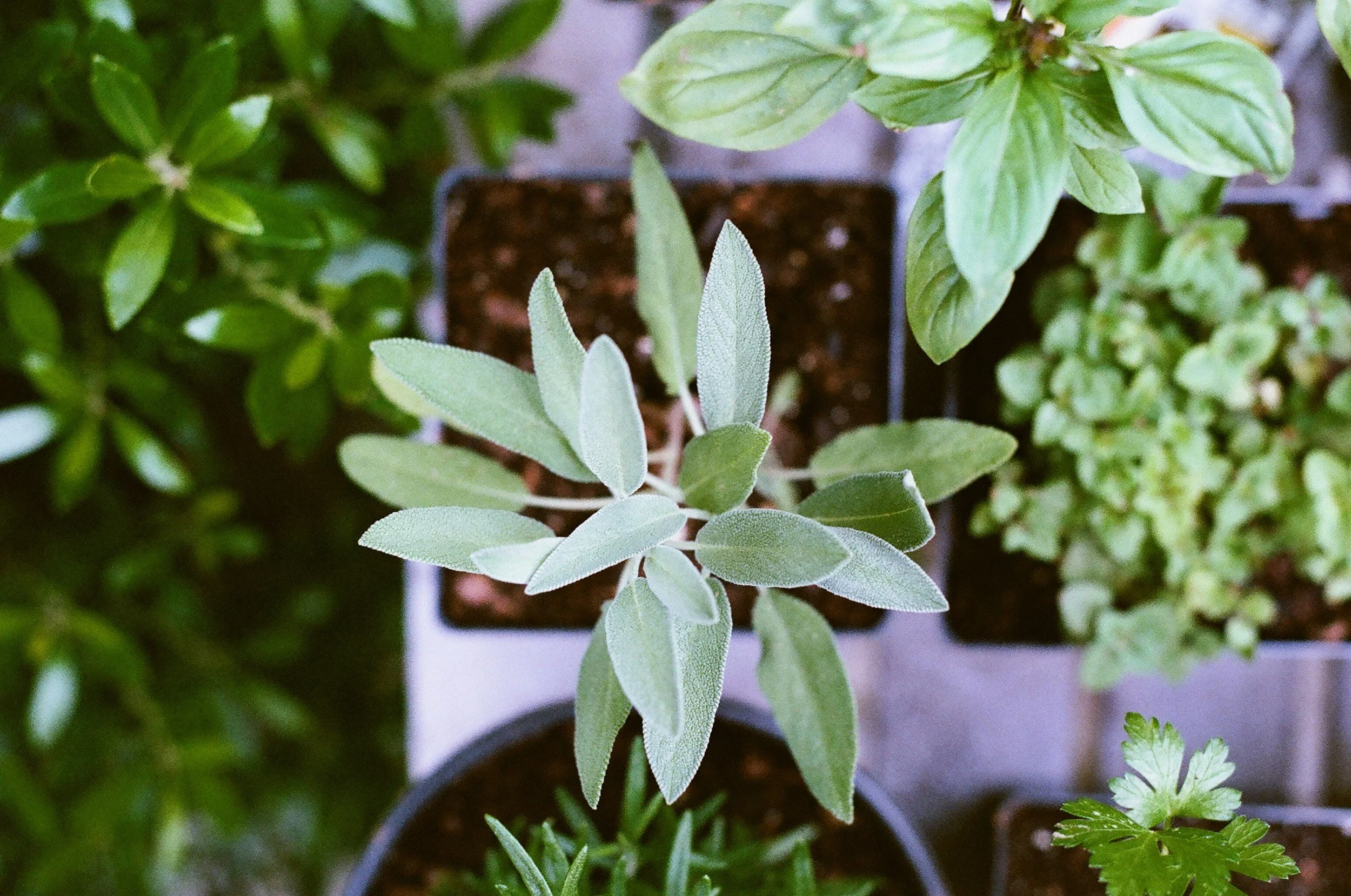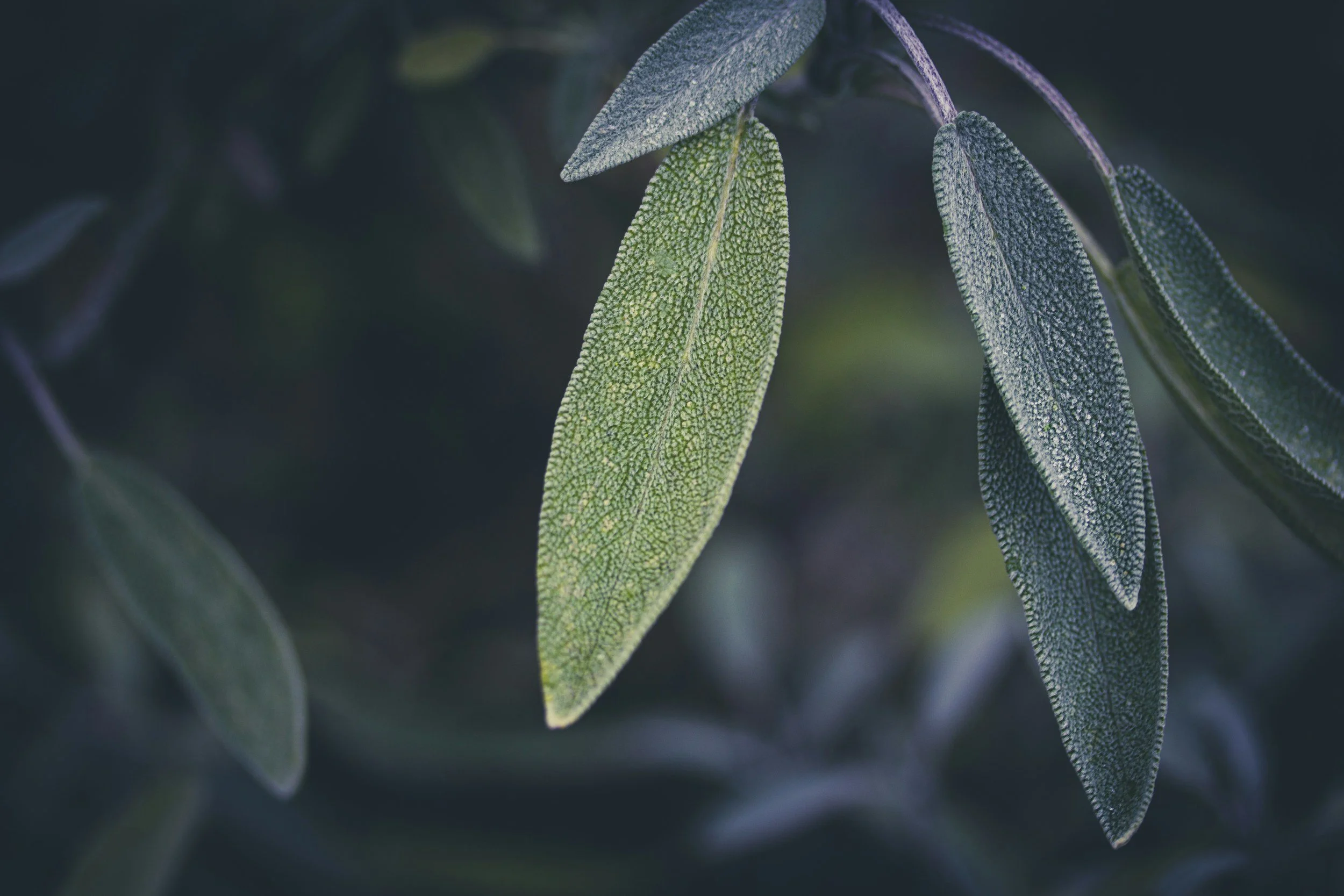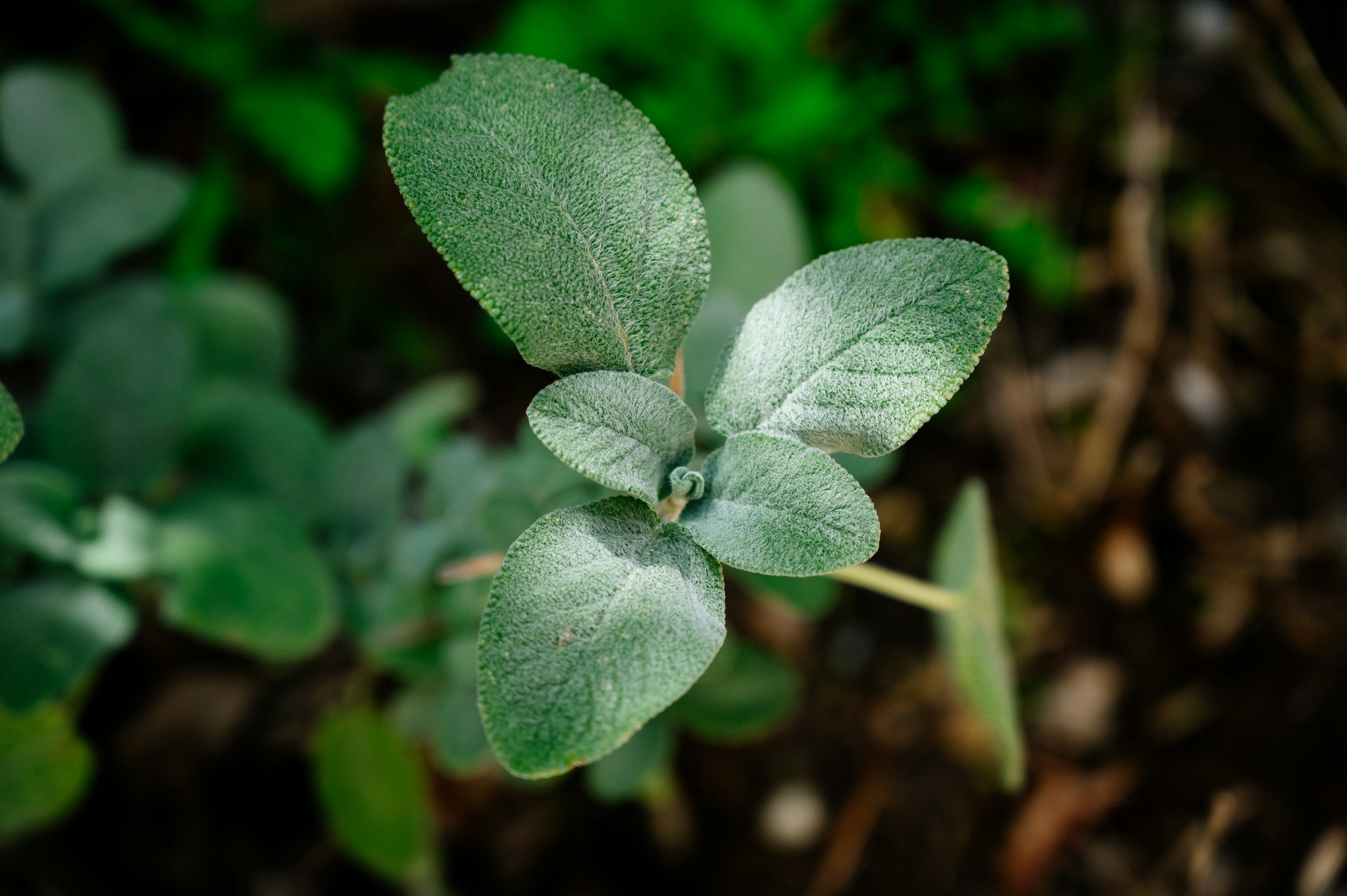
Sage
Sage
(Salvia officinalis)
Plant family
Lamiaceae.
Parts used
Fol (Leaves)
Typical forms of prescription
Fresh leaves
Tinctures
Vinegars
Sage (Salvia officinalis) – Clinical Snapshot
Primary Actions
Astringent
Tonic
Antioxidant
Antiseptic
Antimicrobial
Antiviral
Bitter
Digestive
Carminative
Cholagogue
Diuretic
Phytoestrogenic
Antihydrotic
Diaphoretic
Vasodilator
Anti-inflammatory
Antispasmodic
Anti-catarrhal
Emmenagogue
Primary Indications
Digestive & Metabolic:
Anorexia, bloating, flatulence, colic
High blood sugar
Excess salivation
Poor memory, confusion, anxiety, vertigo
Hormonal & Reproductive:
Menopausal hot flushes
Night sweats
Hyperlactatemia (excess breast milk)
Drying up breast milk (weaning)
Irregular periods
Infections & Immune Support:
Colds, flu, fevers
HSV-1 (Herpes Simplex Virus)
Catarrh, coughs, sore throat
Laryngitis, pharyngitis, tonsillitis
Mouth ulcers
Asthma
Musculoskeletal & Inflammatory:
Arthritis, gout
⚠️Cautions / Safety⚠️
Avoid during pregnancy and lactation (inhibits milk production)
Avoid high doses in epilepsy (contains thujone)
Toxic in extensive or prolonged medicinal doses
Salvia officinalis
Phytochemistry and Pharmacology
Volatile Oils
Includes: Thujone, camphor, 1,8-cineole, borneol
Action: Antimicrobial, astringent, stimulating, carminative
Use: Sage’s aromatic oils give it potent antiseptic and toning properties. They are especially useful in throat infections, gingivitis, digestive sluggishness, and for excessive sweating (e.g. menopausal hot flushes). Camphor and thujone contribute to its stimulating and drying nature.
Phenolic Acids
Includes: Rosmarinic acid, caffeic acid
Action: Antioxidant, anti-inflammatory, antimicrobial
Use: These acids contribute to sage’s strong antioxidant profile, protecting against oxidative stress, supporting liver function, and helping reduce inflammation in mucous membranes, the gut, and skin.
Flavonoids
Includes: Luteolin, apigenin, diosmetin
Action: Antioxidant, vascular tonic, anti-inflammatory
Use: These help stabilise capillaries, calm tissue irritation, and offer mild antihistamine support. Flavonoids also contribute to sage’s tonic action on the uterus and may support hormonal transitions such as menopause.
Diterpenes
Includes: Carnosol, carnosic acid
Action: Neuroprotective, antioxidant, anti-inflammatory
Use: These compounds help explain sage’s traditional use to support memory, clarity, and cognition. They're being researched for potential roles in age-related cognitive decline and neurodegenerative disease.
Tannins
Action: Astringent, antimicrobial, anti-inflammatory
Use: Tannins enhance sage’s usefulness in sore throats, mouth ulcers, diarrhoea, and skin conditions by tightening tissue, reducing inflammation, and promoting healing. Commonly used in gargles, washes, and sitz baths.
Traditional use
For centuries, Sage has held a place of honour in both folk medicine and the kitchen. The Latin phrase, "Cur moriatur homo cui Salvia crescit in horto?", "Why should a man die while sage grows in his garden?" speaks to its reputation as a life-preserving herb. Traditionally used for brain and nervous system health, longevity, fevers, and grief, sage was often burned or smoked for asthma relief. It has long been used to reduce excessive lactation during weaning, regulate menstrual cycles, and treat hot flushes. A folk remedy recommends steeping nine sage leaves in lemon juice overnight and drinking it in the morning for a week to ease menopausal symptoms.
Clinical discussion
Sage's astringent, cooling, and drying qualities are helpful in conditions involving excess fluid production, such as salivation, hyperlactation (excess breast milk), and excessive sweating, particularly during menopausal hot flushes. Cold infusions are especially effective for these presentations.
It is traditionally used for chronic respiratory infections and asthma. It is a potent antimicrobial and toning astringent, commonly applied as a gargle or throat spray for sore throats and as a wound wash.
As a member of the Lamiaceae family, sage contains volatile oils with antimicrobial and antispasmodic properties, making it beneficial for digestive upsets. It also demonstrates antiviral activity against Herpes Simplex Virus (HSV) and can be applied topically for herpetic ulcers.
Sage has long been valued for its cognitive-enhancing effects. In the 16th century, herbalist John Gerard noted it was “singularly good for the head and brain, and quickeneth the nerves and memory.” Modern research supports its role in enhancing memory and mood, with promising results in trials for Alzheimer’s disease, primarily when used alongside herbs like lemon balm and rosemary.
Cultivation/harvesting
Sage (Salvia officinalis) is a woody perennial native to the Mediterranean. Once established, it thrives in full sun and well-drained soil and tolerates dry conditions. Avoid overly rich or damp soil, which can lead to fungal issues.
Propagation:
Easily propagated from semi-ripe cuttings in summer or seed in spring, though cuttings are preferred for reliability.Maintenance:
Trim after flowering to maintain shape and prevent the plant from becoming woody. Replace older plants every 4–5 years as vigour declines.Harvesting:
Harvest leaves and flowers just before or at full bloom, ideally on a hot, dry day when essential oil levels peak. Dry in a dark, well-ventilated space and store in airtight containers.
Key Botanical Features of Sage (Salvia officinalis)
Salvia officinalis, commonly known as sage, is a woody, evergreen perennial herb in the Lamiaceae (mint) family. It is well-known for its strong aromatic properties, culinary use, and medicinal applications, particularly in traditional European herbalism.
Growth Habit
Type: Evergreen subshrub or perennial herb.
Size: Typically grows 30–70 cm (1–2.5 feet) tall.
Form: Compact, bushy, with woody stems at the base and soft green growth above.
Leaves
Type: Simple, oblong to lanceolate, and opposite on the stem.
Size: About 2.5–10 cm (1–4 inches) long.
Colour: Grey-green to silvery-green.
Texture: Velvety or woolly due to a covering of fine hairs (pubescent).
Aroma: Strong, savoury scent, rich in volatile oils (especially thujone, camphor, cineole).
Flowers
Type: Tubular, two-lipped (bilabiate) flowers, typical of the mint family.
Colour: Bluish-purple, sometimes pink or white.
Size: Each flower is about 1.5–2.5 cm (0.6–1 inch) long.
Arrangement: Whorls (verticillasters) on tall flower spikes.
Blooming Period: Late spring to early summer (May–July).
Pollination: Primarily by bees and other pollinators.
Fruits & Seeds
Fruit Type: Nutlets, typically four per flower.
Seed Characteristics: Small, brown to black, and easily propagated.
Habitat & Growth Conditions
Climate: Native to the Mediterranean region; prefers temperate, sunny climates.
Soil: Thrives in well-drained, sandy or loamy soils; dislikes heavy or waterlogged soil.
Sunlight: Requires full sun.
Water Requirements: Drought-tolerant once established; prefers drier conditions.
Hardiness: Hardy in zones 5–9, though harsh winters can affect older wood.
Roots
Type: Fibrous root system.
Function: Spreads modestly; provides stability and supports regrowth after pruning.
Sustainability/conservation:
Widely cultivated in the UK

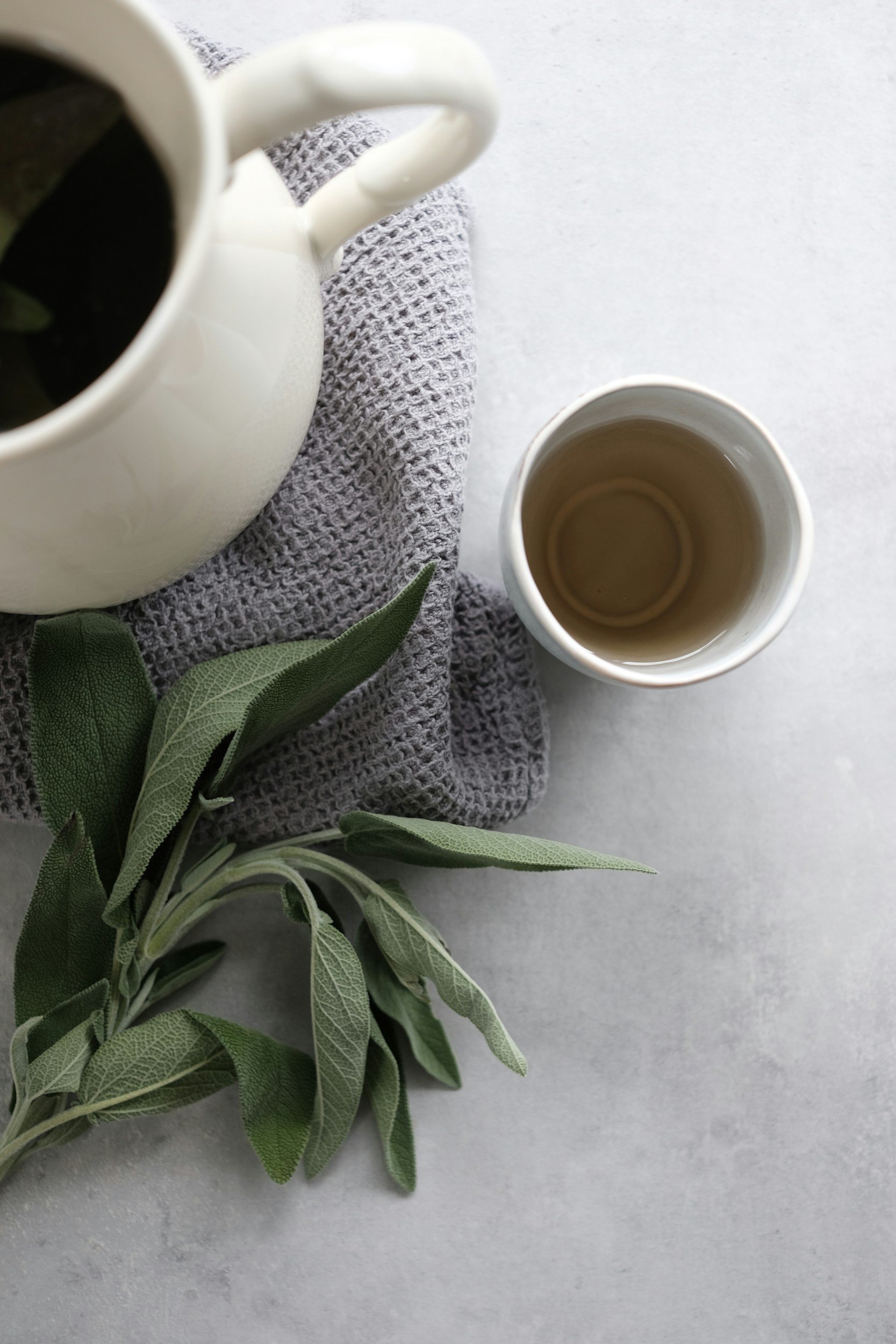

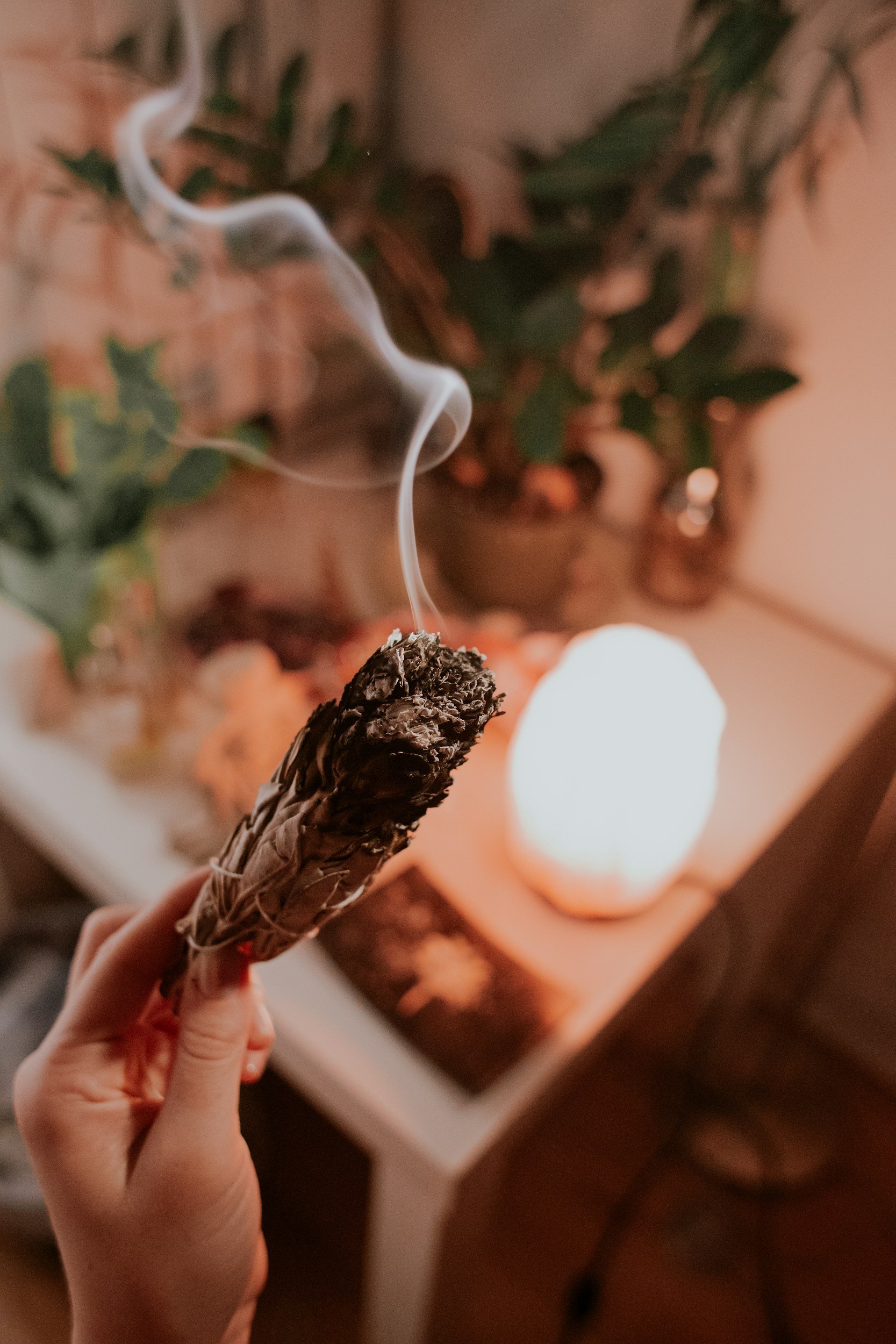
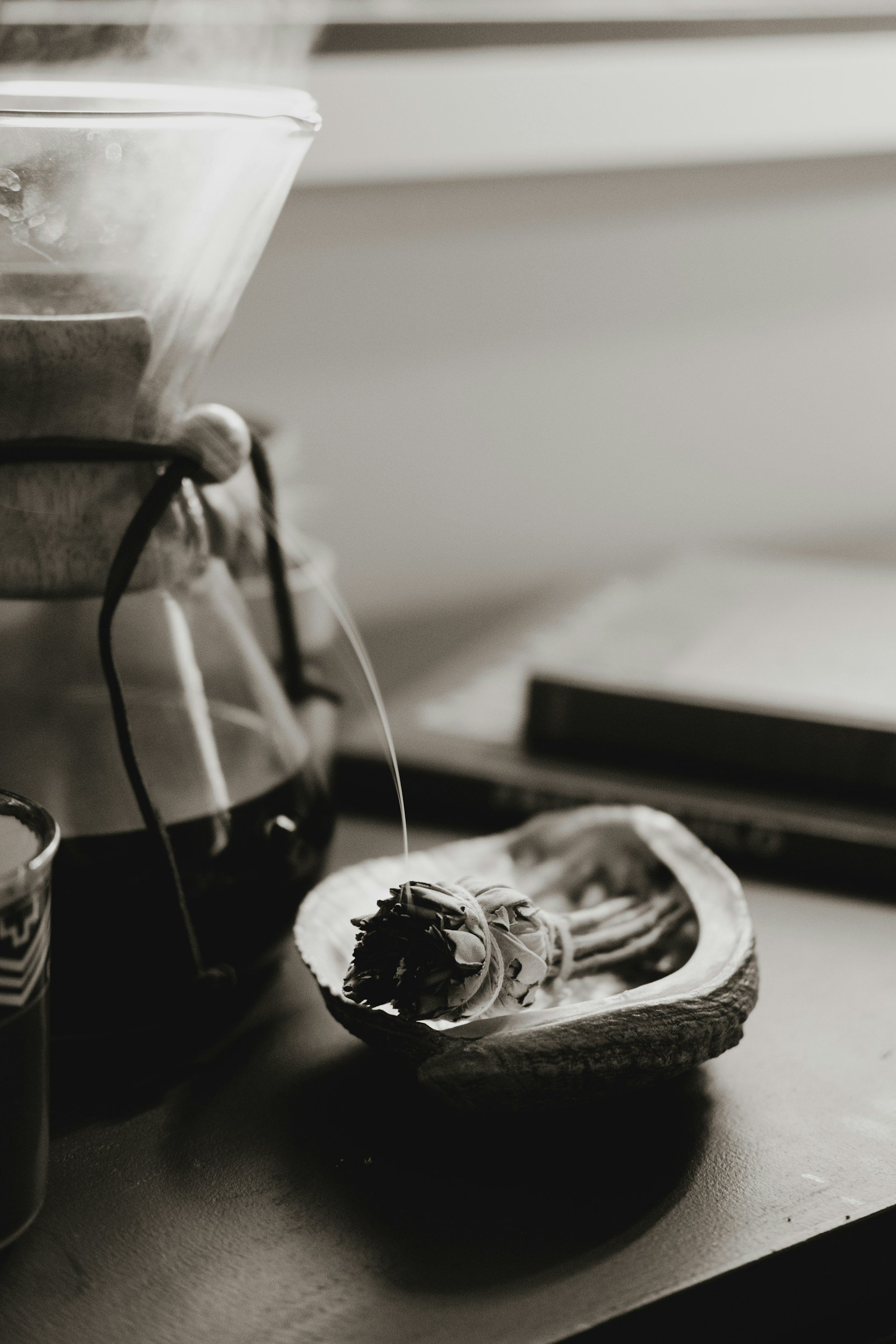

Sources
Bartram, T. (1998). Bartram’s Encyclopedia of Herbal Medicine. Constable.
Fisher, C. (2009). Materia Medica of Western Herbs, (2018 edition). Finchley Road, London. Aeon Books.
Hedley, C & Shaw, N. (2020). A herbal book of making and taking. Finchley Road, London. Aeon Books.
Hoffmann, D. (2003). Medical Herbalism: The Science and Practice of Herbal Medicine. Healing Arts Press.
McIntyre, A. (2019). The complete herbal tutor, revised and expanded edition. Finchley Road, London. Aeon Books.
Plants of the World Online | Kew Science. (n.d.). Plants of the World Online. https://powo.science.kew.org/
Disclaimer: This page is for educational purposes only. Consult a qualified medical herbalist before using herbs, especially during pregnancy, when trying to conceive, while breastfeeding, for medical conditions, or with children.
Read the full disclaimer → Medical Disclaimer.


